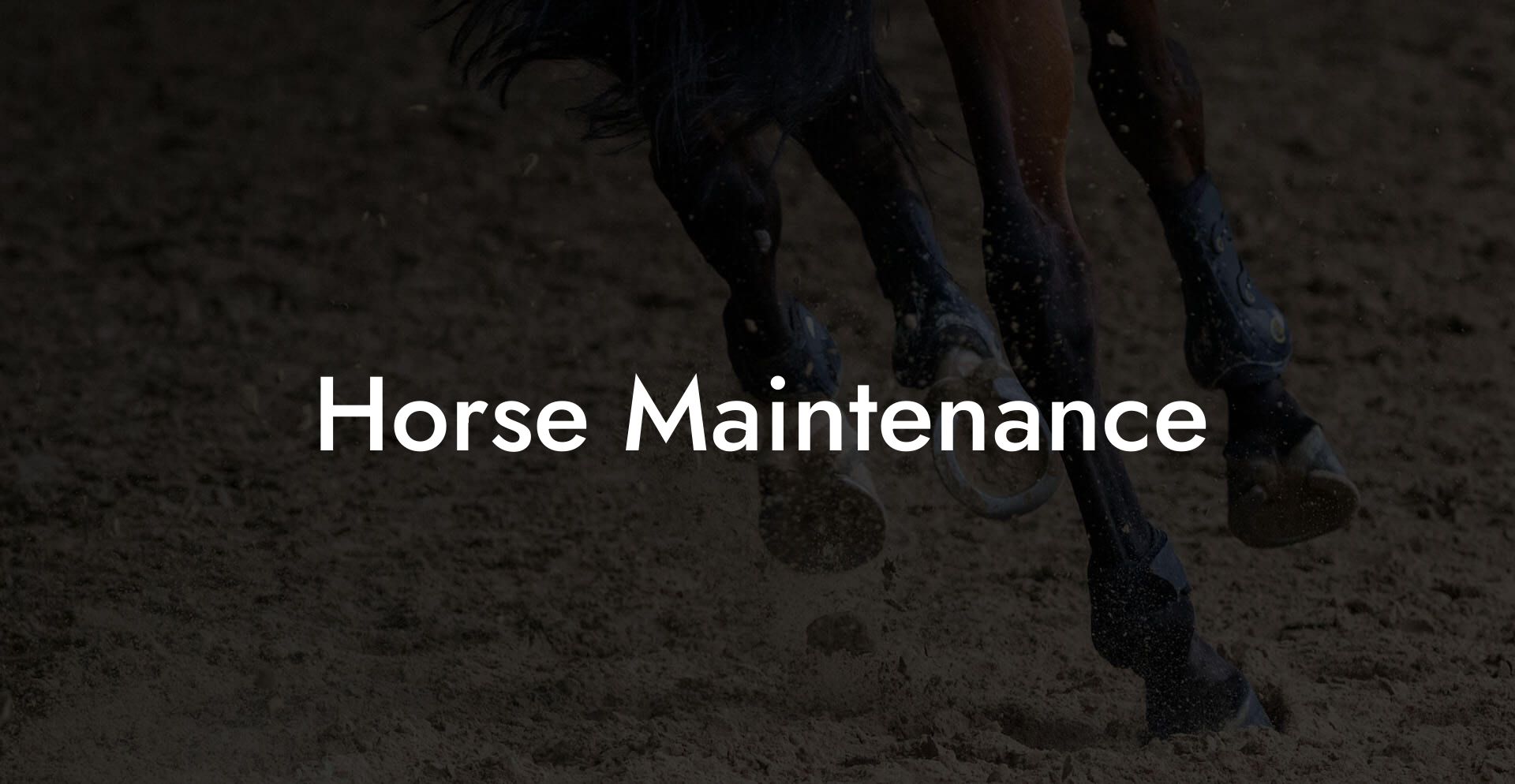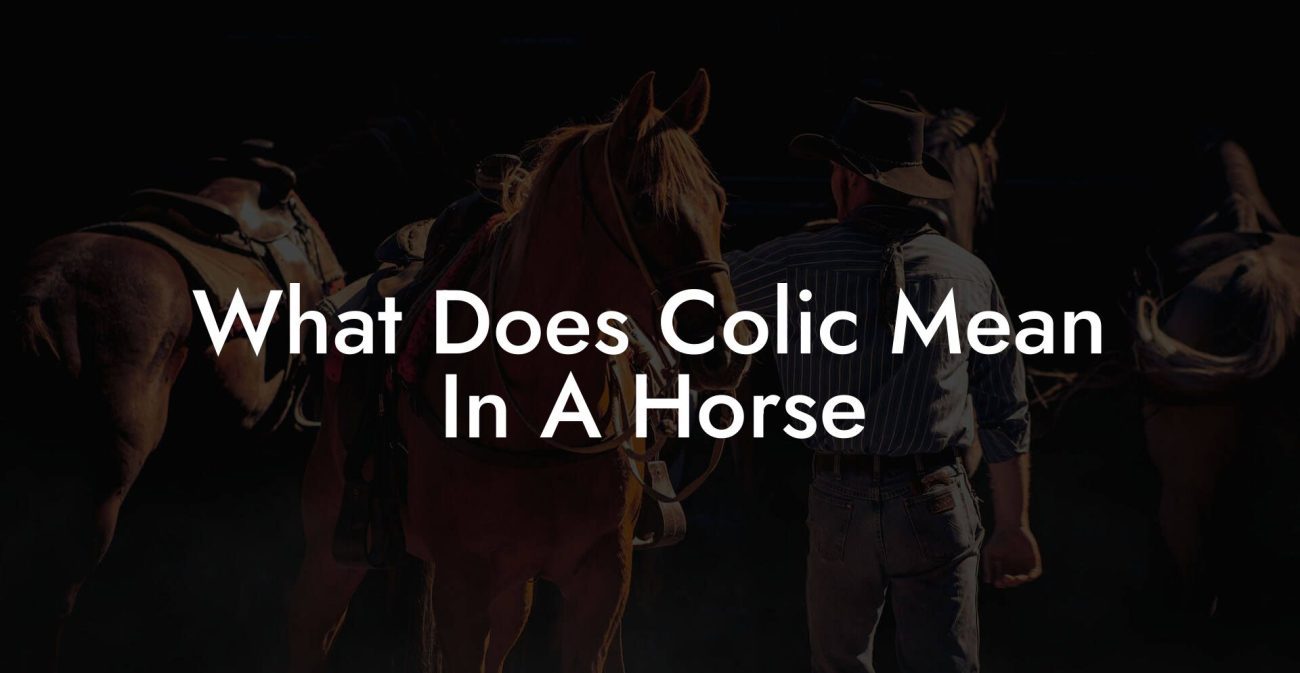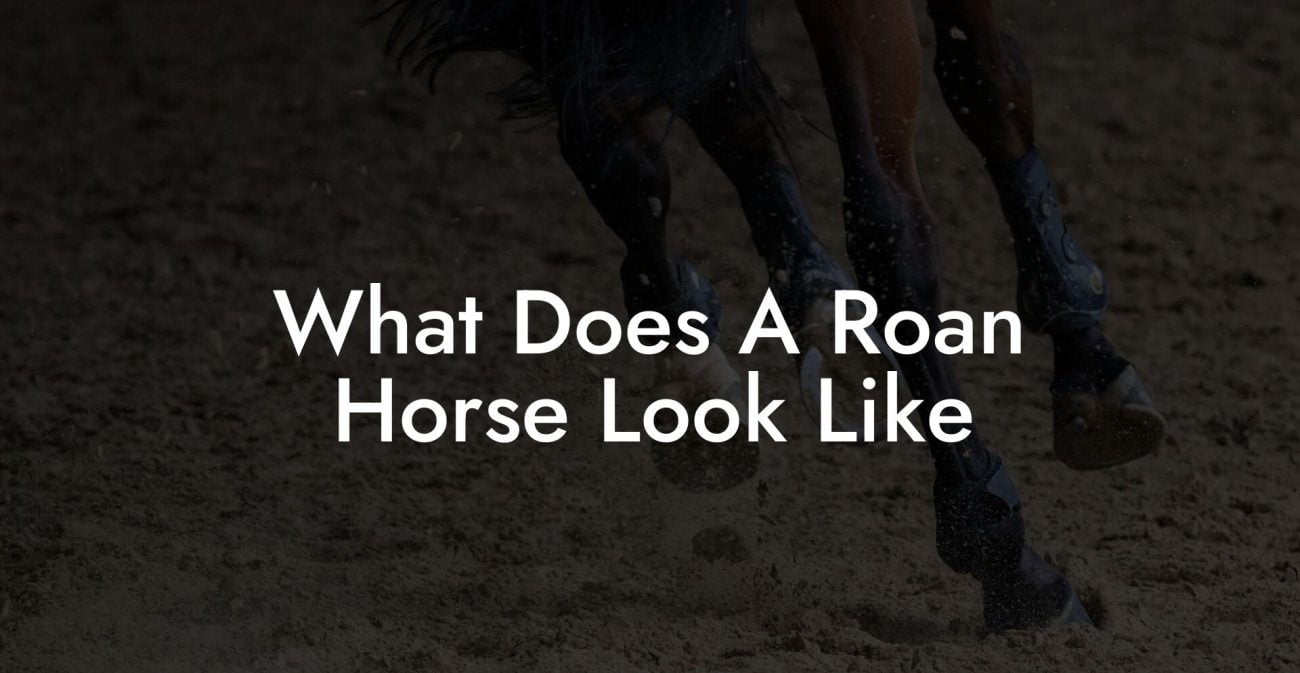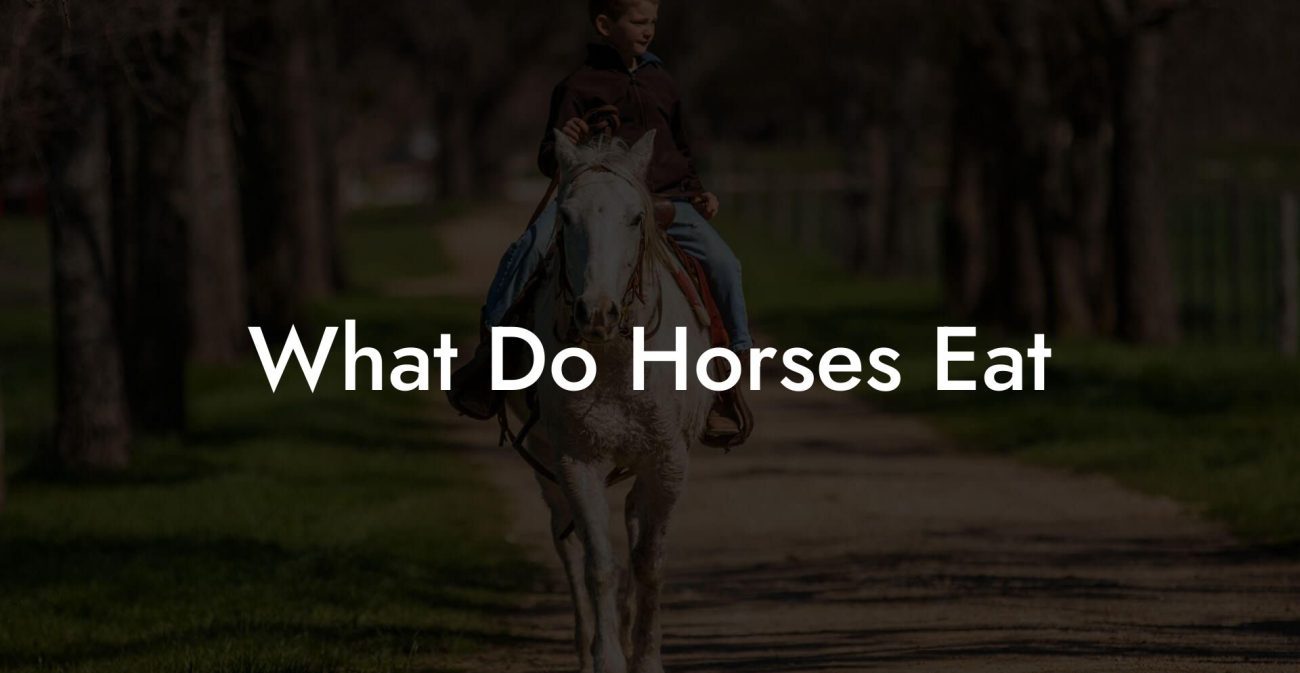riding into the realm of horse maintenance is like setting off on an epic quest, with a trusty steed by your side and Instagram-worthy moments around every corner. For the Gen-Z and millennial equestrian enthusiast, caring for your horse isn’t just about the basics; it’s a blend of practical know-how, creative flair, and a pinch of humor. Whether you're managing a bustling barn or simply bonding with your four-legged friend in your local paddock, this guide is your go-to source for mastering horse care like a true equine influencer.
Quick Links to Useful Sections
- Understanding the Fundamentals of Horse Maintenance
- Daily Routines: Creating a Balanced Schedule for Your Horse
- Feeding: The Art of Equine Nutrition
- Exercise: Keeping the Gallop Alive
- Rest and Downtime: The Zen of Grazing
- Grooming: More Than Just a Makeover
- Brushing and Bathing: The Daily Ritual
- Hoof Care: The Foundation of Equine Mobility
- Stabling and stable Management: Creating a Comfortable Home for Your Horse
- Bedding: Soft Landings for Happy Hooves
- Ventilation and Temperature Control: Keeping It Cool
- Cleanliness and Safety: The Backbone of Equine Care
- Exercise and Mental Stimulation: The Dual Power of Horse Fitness
- Physical Exercise: Strengthening Muscles and Bonds
- Mental Engagement: Puzzles and Playtime
- The Nutritious Side: Feeding Your Horse for Peak Performance
- Hay and Forage: Nature’s Bounty
- Grains, Supplements, and Treats: Tailored Fueling
- Hydration: Liquid Gold for Equines
- Seasonal Horse Maintenance: Adjusting to Nature’s Rhythms
- Spring and Summer: Embracing Growth and Abundance
- Fall and Winter: Keeping Warm and Staying Healthy
- equipment, Tack, and Saddlery: Keeping It Slick and Safe
- Regular Inspection and Cleaning
- Smart Storage Solutions
- DIY Horse Maintenance Tips: Embracing Innovation and Creativity
- Upcycling Old Tack and Equipment
- DIY Grooming Stations and Storage Hacks
- Innovative Feeding Solutions
- Resources and Community Support: Your Next Steps
- Advanced Horse Maintenance Techniques: Technology Meets Tradition
- Smart Wearables for Horses
- Digital Management Tools
- Integrating Traditional Wisdom with Modern Insights
- Tailoring Your Horse Maintenance Plan: Steps to Build a Personalized Routine
- Step 1: Comprehensive Health and Activity Assessment
- Step 2: Define Clear Goals
- Step 3: Craft a Multi-Faceted Routine
- Step 4: Leverage Community and Technology
- Step 5: Review and Adapt
- Equine Safety and Emergency Preparedness
- Integrative FAQ Section: Your Horse Maintenance Questions Answered
- Your Journey to Empowered Equine Care
Understanding the Fundamentals of Horse Maintenance
Before diving into the nitty-gritty details of grooming, feeding, and stabling, it’s essential to wrap your head around what horse maintenance actually means. At its core, horse maintenance encompasses every activity that ensures your horse stays healthy, happy, and ready to trot any trail. This includes routine veterinary care, proper nutrition, regular exercise, and consistent grooming.
Think of it as a holistic approach to equine well-being, where every aspect of your horse’s life is interconnected. When their nutritional needs, exercise routines, and living conditions are harmonized, your horse can thrive both physically and mentally.
Moreover, modern horse care is evolving. Gone are the days when stables were utilitarian hideaways; today, they’re seasonal sanctuaries equipped with smart technology and eco-friendly practices. As an owner, being in tune with these advances not only benefits your horse but also elevates your stewardship to a whole new level.
Daily Routines: Creating a Balanced Schedule for Your Horse
A horse’s day is a carefully choreographed performance involving feeding, exercise, and a bit of downtime for those reflective moments in the pasture. Establishing a daily routine that factors in these essential elements is paramount to equine maintenance. Let’s break it down:
Feeding: The Art of Equine Nutrition
A well-fed horse is a happy horse, and feeding is more than tossing hay into a trough. It’s about understanding your horse’s dietary requirements, balancing quality forage with the right blend of grains, supplements, and fresh water. Gen-Z and millennial owners are turning to apps and smart feeders that ensure portion control and track nutritional intake in real time.
Consider the seasonal shifts too. In the pastures of spring and summer, when fresh grass is plentiful, you may want to adjust the amount of supplemental feed. Conversely, in the winter months, concentrated feeds and additional vitamins can help stave off the chill.
Exercise: Keeping the Gallop Alive
Just like us, horses need regular exercise to keep their muscles toned and their minds sharp. Whether it’s a brisk trot around the arena, a long canter in the open fields, or even some strategic lunging sessions, exercise should be diverse and stimulating. Mix up their routine with trail rides, obstacle courses, and interactive play sessions to prevent boredom, which can lead to behavior issues.
Modern equine fitness also includes techniques akin to a human gym session. Think targeted warm-up routines, conditioning exercises, and cool-down stretches. This not only helps prevent injuries but also reinforces the bond between you and your horse as you work together towards peak performance.
Rest and Downtime: The Zen of Grazing
Horses are creatures of habit, and they need ample time to relax and digest their meals. Allowing them to graze freely, or even enjoy a quiet moment in the shade, is critical for efficient digestion and overall well-being. A balanced mix of activity and rest can significantly reduce stress levels and promote overall health.
Grooming: More Than Just a Makeover
Grooming is a key pillar in horse maintenance that goes far beyond aesthetics. Regular grooming sessions are the prime opportunity to check on your horse’s physical condition, bond with them, and even prevent potential health issues.
Brushing and Bathing: The Daily Ritual
Regular brushing not only keeps your horse’s coat shiny and free of dirt, but it also stimulates blood circulation. Use a variety of brushes, from curry combs to soft brushes, to tackle the different parts of their body. Advanced grooming brushes now come with ergonomic designs, making it easier for you to give your horse a spa-like experience at home.
Bathing your horse should be a treat rather than a chore. Modern horse grooming involves using gentle, equine-specific shampoos and conditioners that keep their skin and coat in prime condition. Make the experience fun by playing soft music, turning it into a bonding ritual that both you and your horse look forward to.
Hoof Care: The Foundation of Equine Mobility
Horses’ hooves are their lifelines. Routine cleaning and inspection of the hooves help prevent infections and injuries. A quick pick and brush after every ride goes a long way in ensuring your horse’s hooves remain strong. Incorporate quarterly visits from a farrier, a specialist who trims and balances the hooves, to maintain proper alignment and support.
For those who love the DIY approach, learning the basics of hoof care can also be a rewarding experience. Always observe your farrier’s techniques and gradually build up your expertise, ensuring you’re offering the best care without compromising your horse’s comfort.
Stabling and stable Management: Creating a Comfortable Home for Your Horse
The stable is the epicenter of your horse’s world, a safe haven where comfort meets functionality. Effective stable management is key to ensuring that your horse lives in an environment that promotes both physical and mental health.
Bedding: Soft Landings for Happy Hooves
Bedding is a critical element in a horse’s daily comfort. Materials such as straw, shavings, or even eco-friendly alternatives like wood pellets can impact your horse’s quality of sleep and joint health. Choose bedding that absorbs moisture well and is free from dust and allergens.
Regularly cleaning out the stable and changing the bedding not only reduces odors but also minimizes the risk of respiratory issues. For the tech-savvy millennial, smart stable systems now feature automated cleaning schedules that help keep things pristine without the back-breaking labor.
Ventilation and Temperature Control: Keeping It Cool
A well-ventilated stable is crucial for preventing the buildup of ammonia from urine and manure. Modern stall barns incorporate advanced ventilation systems and temperature control to ensure a consistent, comfortable environment for your horse, regardless of the season.
Whether you’re upgrading an old barn or setting up a new stable, invest in sustainable practices that promote airflow and reduce energy consumption. This not only benefits your horse’s health but also aligns with an eco-friendly lifestyle, a must for the environmentally conscious equestrian.
Cleanliness and Safety: The Backbone of Equine Care
Maintaining a clean stable is non-negotiable. Implement a daily cleaning routine that includes removing manure, disinfecting surfaces, and ensuring there are no hazards that could injure your horse. A safe environment minimizes the risk of infections and accidents.
Incorporating natural cleaning solutions and eco-friendly disinfectants allows you to protect not only your horse’s health but also the environment. A spotless stable is a testament to effective horse maintenance and responsible ownership.
Exercise and Mental Stimulation: The Dual Power of Horse Fitness
Just as humans benefit from a well-rounded fitness regimen, horses need a mix of physical activity and mental stimulation to stay in top shape. Ignoring either aspect can lead to issues like boredom, stress, and even behavioral problems.
Physical Exercise: Strengthening Muscles and Bonds
When it comes to physical exercise, variety is the spice of equine life. Apart from regular riding, consider incorporating ground exercises such as lunging, pole bending, and obstacle courses that not only work on muscle conditioning but also challenge your horse’s agility.
Mixing in activities like trail riding or participating in fun events like horse yoga (yes, that’s a thing now!) can keep both you and your horse engaged. Advanced riders might even explore competitive sports, where regular training sessions blend rigorous fitness with strategic riding.
Mental Engagement: Puzzles and Playtime
Horses are naturally curious and intelligent creatures. Mental stimulation is essential to ward off boredom and prevent negative behaviors. Incorporate simple games and puzzles, like treat-dispensing toys or interactive training drills, that engage your horse’s mind.
Social interaction is also a crucial component of mental health. If possible, allow your horse to mingle with other horses in a safe, controlled environment. Not only does this offer rich social experiences, but it also mimics natural herd behavior, fostering a calm and content demeanor.
The Nutritious Side: Feeding Your Horse for Peak Performance
If you think gourmet meals are just for humans, think again, your horse deserves top-tier nutrition too. Feeding your equine friend the right diet not only fuels their daily adventures but also builds the foundation for long-term health.
Hay and Forage: Nature’s Bounty
The bulk of a horse’s diet comes from hay and pasture grasses. High-quality hay, whether it’s Timothy, Bermuda, or orchard grass, supplies essential fiber and nutrients. Supplement this with free-choice access to safe, pesticide-free pasture to help mimic their natural grazing behavior.
For those in urban or suburban areas, sourcing the best hay might require a bit of research, but it’s well worth the effort. Quality forage leads to better digestion, weight management, and overall vitality, paving the way for a robust and energetic horse.
Grains, Supplements, and Treats: Tailored Fueling
While hay is the cornerstone, grains and supplements can add an extra boost, just like your morning matcha latte! Grains such as oats or barley provide additional energy, especially for performance horses. Supplements tailored to your horse’s specific needs, think vitamins, minerals, and joint support compounds, can make a big difference.
And let’s not forget treats. Smart, healthy treats can serve as rewards during training sessions, reinforcing positive behavior while making sure your horse’s diet remains balanced. When choosing treats, opt for natural ingredients that don’t contain excessive sugars or artificial additives.
Hydration: Liquid Gold for Equines
Hydration is the unsung hero in horse nutrition. Fresh, clean water is indispensable to nearly every bodily function, from digestion to thermoregulation. In hotter weather or during extended exercise sessions, ensure your horse has constant access to water. Some modern barns even incorporate smart water monitoring systems to alert you when refills are needed.
Seasonal Horse Maintenance: Adjusting to Nature’s Rhythms
As the weather shifts, so too should your approach to horse maintenance. Each season brings its own set of challenges and opportunities, from the dewy freshness of spring to the frosty whispers of winter. Tailoring your care routines to these changes not only optimizes your horse’s well-being but also keeps things interesting.
Spring and Summer: Embracing Growth and Abundance
With warmer weather comes longer days and abundant grazing opportunities. During this time, increase your horse’s outdoor time to take full advantage of the fresh pasture. However, watch out for seasonal allergens and take precautions to minimize insect bites by using equine-safe repellents.
The grooming routine will also intensify: frequent baths help wash away pollen and sweat, ensuring that your horse’s coat remains healthy and vibrant. Additionally, monitor water intake closely, hydration remains key under the summer sun.
Fall and Winter: Keeping Warm and Staying Healthy
As temperatures drop, equine care pivots toward providing extra warmth and support. The stable becomes a haven to protect your horse from the biting cold. Increase the quality and quantity of bedding, and consider using heated water buckets to encourage drinking during frigid mornings.
During these months, balance exercise with indoor activities. Trot sessions in covered arenas or shuttle races can maintain fitness while avoiding the harsh winter chill. Nutrition, too, might require a boost, supplementation with energy-dense feeds and added fats can help your horse maintain body condition against the cold.
equipment, Tack, and Saddlery: Keeping It Slick and Safe
Beyond the basics of feeding, housing, and exercise, maintaining your horse’s equipment is a vital component of overall equine care. From saddles to bridles, well-maintained tack ensures safety and comfort during every ride.
Regular Inspection and Cleaning
Just as you care for your own wardrobe, your horse’s gear needs regular attention. Inspect your tack for wear and tear, and give everything a thorough clean after every use. Moisture and sweat can degrade leather and other materials, so a consistent cleaning routine extends the lifespan of your equipment.
Modern equestrians are leveraging eco-friendly cleaning agents that not only protect the tack but also reduce environmental impact. A little bit of elbow grease here and there goes a long way in ensuring that your saddle, bridle, and other gear remain in pristine condition.
Smart Storage Solutions
When your tack isn’t in use, proper storage is key. Utilize padded racks, breathable covers, and climate-controlled storage areas when possible. This protects your investments from moisture, pests, and even those inevitable Instagram mishaps.
Consider using modular storage systems that allow for quick access and organization during busy barn days, because even horses appreciate a touch of minimalist chic.
DIY Horse Maintenance Tips: Embracing Innovation and Creativity
For the modern equestrian who loves a good DIY challenge, there are plenty of ways to personalize horse maintenance. From crafting your own grooming tools to building eco-friendly stable upgrades, these projects bring both creativity and cost efficiency into play.
Upcycling Old Tack and Equipment
If you’ve got some worn-out tack or unused gear gathering dust, consider giving it a makeover instead of sending it to the landfill. Upcycling not only saves money but also allows you to inject a bit of personality into your stable. Transform old leather items into stylish coasters or custom-hung saddle rugs, the choices are endless!
DIY Grooming Stations and Storage Hacks
Setting up a dedicated grooming station or a custom storage area can make routine maintenance simpler and more enjoyable. Use reclaimed wood to build a rustic yet modern grooming table or install pegboards on your barn walls for efficient tool organization. These small projects can have a big impact on your daily workflow and keep your space as trendy as your social feed.
Innovative Feeding Solutions
Experiment with smart feeders and DIY hay nets that minimize waste and ensure even distribution. With a few tweaks and creative thinking, you can design a feeding system that not only meets your horse’s nutritional needs but also reduces the mess in the stable, a win-win for both you and your four-legged buddy.
Resources and Community Support: Your Next Steps
One of the most rewarding aspects of horse maintenance is joining a community that shares your passion. From online forums and social media groups to local equestrian clubs, resources are abundant. Reach out for advice, share your successes and challenges, and learn from others who have been around the barn a few times.
Many websites, blogs, and YouTube channels are dedicated to horse care, offering tutorials, expert interviews, and product reviews. These resources can help you stay updated on the latest trends, from sustainable stable designs to breakthrough advancements in equine nutrition.
Don’t hesitate to connect with local veterinarians, farriers, and trainers as well; real-life advice often complemented by a genuine community vibe is invaluable. With digital calendars and apps, scheduling online workshops or live Q&A sessions has never been easier, meaning you’re just a click away from equine enlightenment.
Advanced Horse Maintenance Techniques: Technology Meets Tradition
As with any modern practice, horse maintenance is rapidly evolving with new technologies that merge tradition with innovation. Harnessing data-driven insights can lead to breakthroughs in how you manage your horse’s health, exercise regimes, and even socialization habits.
Smart Wearables for Horses
Ever thought of outfitting your horse with a fitness tracker? Today, smart wearables are available that monitor vital signs, track movement, and even alert you to signs of distress or irregularities. These devices have transformed how trainers and owners understand a horse’s daily activity and can help pinpoint any issues before they escalate.
Integrating technology into your routine can make your horse’s care routine more efficient and provide a wealth of data that informs everything from nutrition plans to exercise regimens. It’s like having a personal trainer available 24/7, but for a horse!
Digital Management Tools
Gone are the days of paper logs and scattered notes. With digital management tools and mobile applications, you can keep comprehensive records of your horse’s veterinary appointments, dietary logs, and training milestones. These platforms often allow you to share updates with your care team, ensuring everyone is on the same page.
Leveraging these digital tools not only streamlines your management process but also helps in making data-driven decisions that enhance your horse’s overall wellbeing.
Integrating Traditional Wisdom with Modern Insights
Despite the rapid technological advancements, traditional horse care wisdom remains invaluable. Many seasoned equestrians swear by time-tested practices passed down through generations. Marrying these traditional methods with cutting-edge technology creates a balanced approach, ensuring that your horse receives the best of both worlds.
Whether it’s using a centuries-old herbal supplement or employing the latest in wearable tech, the goal remains the same: fostering a healthy, happy, and well-maintained equine companion.
Tailoring Your Horse Maintenance Plan: Steps to Build a Personalized Routine
Every horse is as unique as its owner, and the key to successful maintenance is developing a routine that meets your specific needs. Here are some actionable steps to create your own personalized plan:
Step 1: Comprehensive Health and Activity Assessment
Start by evaluating your horse’s current state: body condition, exercise habits, dietary practices, and overall energy levels. Consult with a veterinarian for a detailed health exam and consider tracking your horse’s activity using modern wearables.
Step 2: Define Clear Goals
Whether you aim to improve your horse’s fitness, enhance its coat and skin condition, or optimize feeding routines, setting clear, measurable goals is crucial. Establish both short-term and long-term benchmarks, this keeps you and your equine partner motivated as you witness progress over time.
Step 3: Craft a Multi-Faceted Routine
Combine daily tasks (feeding, grooming, exercise) with weekly activities (stall cleaning, specialized workouts) and seasonal adjustments. Remember, mix it up with engaging challenges to keep your horse mentally stimulated.
Step 4: Leverage Community and Technology
Use digital tools to track your progress and join local equestrian communities. Share tips, celebrate milestones, and obtain feedback to continually refine your approach.
Step 5: Review and Adapt
Your personalized plan should evolve as your horse grows and its needs change. Regularly revisit and adjust your routine based on performance, weather changes, and expert advice. Flexibility is key in achieving sustainable results.
By following these steps and integrating modern technology with time-honored practices, you’re setting both you and your horse up for long-term success. This tailored, dynamic approach to horse maintenance is the secret behind many of the healthiest, happiest equines around.
Equine Safety and Emergency Preparedness
No discussion of horse maintenance is complete without addressing safety. From routine check-ups to emergency preparedness, being equipped with the right knowledge and tools can safeguard your horse’s life.
Keep a well-stocked first aid kit in your stable that includes everything from antiseptics and bandages to equine-specific medications. Make sure you know the signs of common emergencies like colic, laminitis, or respiratory distress, and always have a plan in place, including quick access to your veterinarian or local emergency service.
Remember, an ounce of prevention is worth a pound of cure. Training sessions on emergency response for both you and your stable staff can be lifesaving, ensuring that when unforeseen incidents occur, everyone knows how to act swiftly and safely.
Integrative FAQ Section: Your Horse Maintenance Questions Answered
Here are some frequently asked questions about horse maintenance that address common concerns and dispel some equine myths along the way:
1. What does horse maintenance involve?
Horse maintenance covers everything from daily feeding, grooming, and exercise to regular veterinary care, stable management, and seasonal adjustments. It’s a comprehensive approach to ensuring your horse’s physical and mental well-being.
2. How often should I groom my horse?
Regular grooming is essential. Daily light brushing and hoof cleaning, coupled with deeper cleaning sessions a few times a week, can maintain coat health, promote circulation, and provide valuable bonding time.
3. What are the best feeding practices for my horse?
A balanced diet of high-quality hay, pasture access, appropriate grains, and supplements, tailored to your horse’s age, activity level, and health, ensures optimal nutrition. Always provide fresh water and adjust the feed seasonally.
4. How do I maintain a clean and safe stable environment?
Consistent cleaning routines, proper bedding management, good ventilation, and regular inspections of stalls and equipment are crucial. Incorporating sustainable practices enhances safety and reduces health risks.
5. Can technology really help in horse maintenance?
Absolutely. From wearable fitness trackers to digital stable management apps, modern technology provides valuable insights that help tailor routines, track progress, and improve overall equine health.
6. What seasonal changes affect horse care the most?
Seasonal variations require adjustments in feeding, exercise routines, and stable management. Warmer months bring challenges like hydration and allergens, while colder weather demands extra bedding and nutritional energy boosts.
7. How often should I visit the farrier?
Regular hoof care is vital. Most horses benefit from farrier visits every 6-8 weeks, though the specific schedule can vary based on the horse’s activity level and hoof health.
Staying informed, staying proactive, and blending modern techniques with traditional wisdom are the keys to mastering horse maintenance.
Your Journey to Empowered Equine Care
Embracing all facets of horse maintenance, from daily grooming rituals to advanced digital tracking, enables you to become not just an owner, but a true caretaker and innovator in equine welfare. Each step, whether it’s mixing up a new feed formula or revamping your stable’s ventilation, contributes to a holistic approach that keeps your horse vibrant and ready to take on the world.
As you navigate the ups and downs of equine management, remember that every challenge is an opportunity to learn, grow, and connect with a community of like-minded enthusiasts. With humor, heart, and high-tech tools, you’re building a legacy of care that resonates with every hoofbeat.
So saddle up, experiment with new ideas, and let your passion for horse maintenance shine. Your journey is an ever-evolving adventure, merging tradition with innovation, creating not just a routine, but a thriving ecosystem of equine health and happiness.
Your four-legged partner isn’t just an animal; they’re a reflection of your commitment to excellence and creativity. Embrace the ride, celebrate every milestone, and remember, equine care is as much about the heart as it is about the science.













